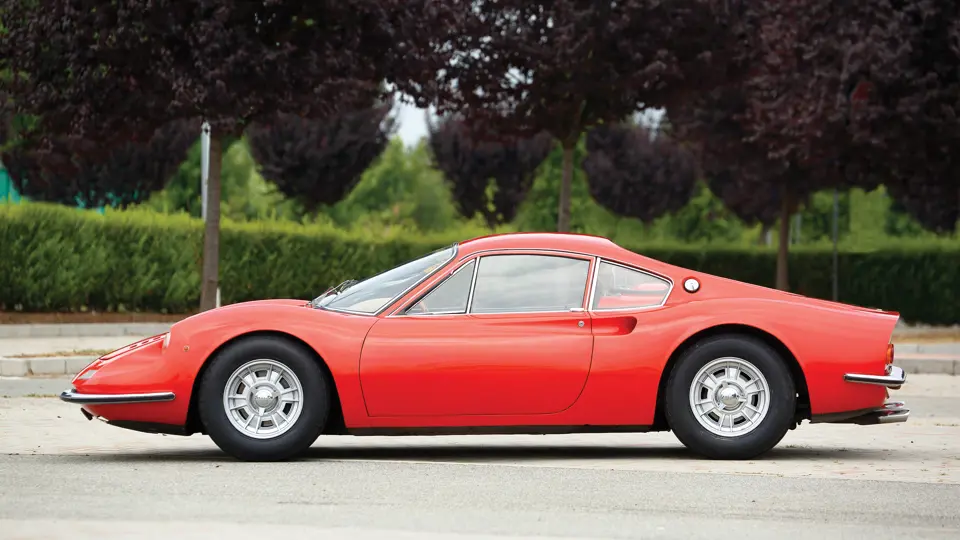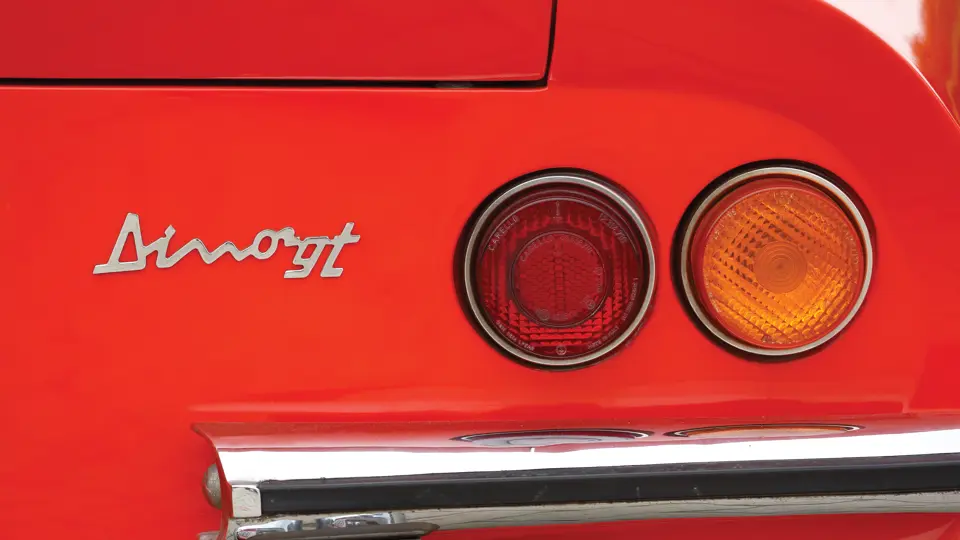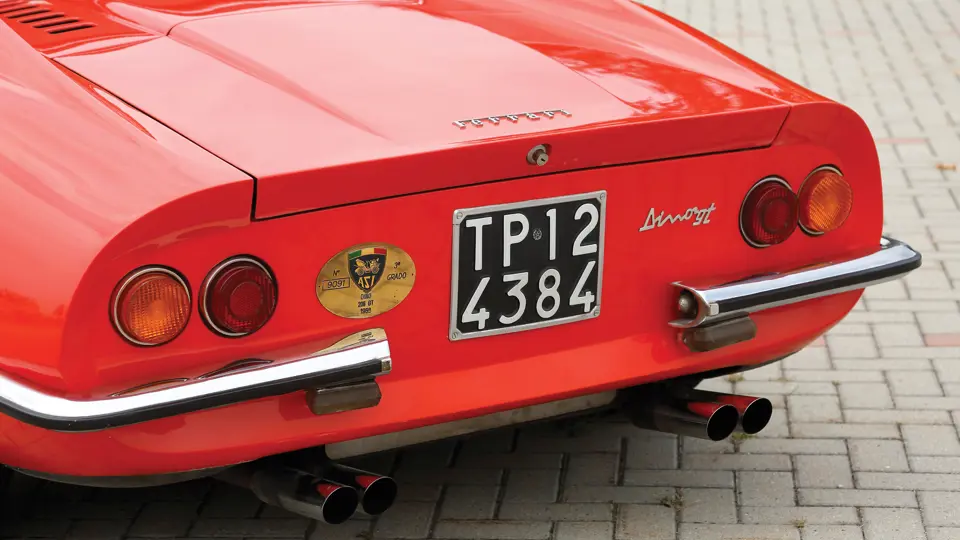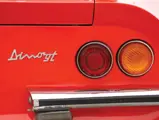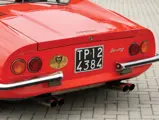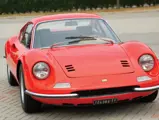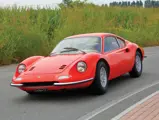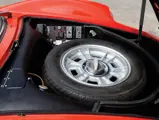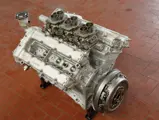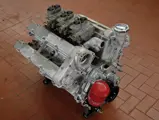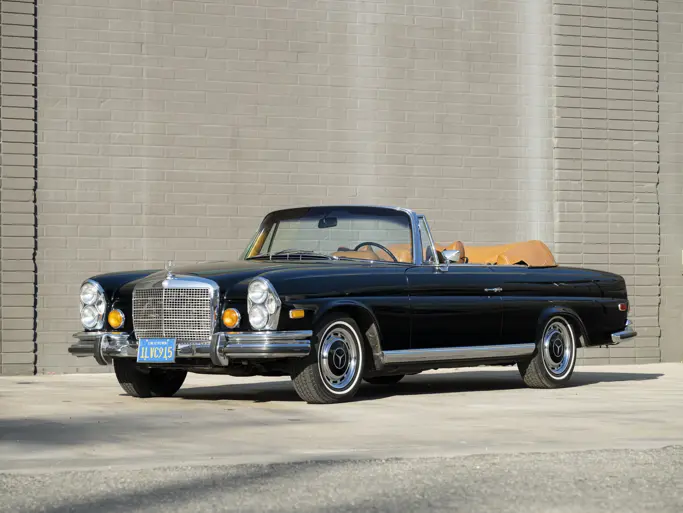158 bhp, 1,987 cc DOHC Tipo 135B transversely mounted alloy V-6 engine with three Weber carburettors, five-speed manual transmission, front and rear independent wishbone suspension with coil springs and telescopic dampers, and four-wheel ventilated disc brakes. Wheelbase 2,280 mm
In 1965, at the Paris Salon, a mid-engined prototype called the “Dino 206 GT Speciale” was unveiled on the Pininfarina stand. Although a design study, its core was based on the chassis of a sports racing model which featured inline, mid-engined placement. The car featured headlights covered by a clear Perspex lens, which extended to the full width of the nose, but otherwise the shape was essentially that which would develop into the production car offered here.
In 1967, it was becoming increasingly important for Ferrari to reduce production costs whilst at the same time increase sales. A new road car was key, and with the prototype of the Dino 196 S already in-house, Ferrari saw an opportunity to design a smaller-displacement road going variant, which for the first time would be built on a production line. The design needed to be classic and attractive, yet also accommodate the Fiat V-6, which had been developed by Ferrari and engineered to be mounted transversely. Pininfarina penned the work of art, which was built by Scaglietti, and it would become one of the most iconic automotive designs.
The relatively small engine for a Ferrari was chosen due to new regulations in Formula Two that required the racing engines to be production-based and built in quantities of no fewer than 500 a year. As Ferrari was unable to match the production quantities required, it formed an alliance with Fiat and made an agreement that all models featuring this engine, whether Ferrari or Fiat, would wear the “Dino” script badge.
After three further prototypes had been unveiled, production commenced in 1968 and ran until 1969, with 154 examples initially being produced. All 206 Dinos were left-hand drive and featured an aluminium body and engine, distinguishing it from the later steel-bodied 246 Dinos. Ferrari also implemented a new even-number chassis numbering sequence for the Dino brand name, to differentiate them from the odd-number sequence of the Ferrari road cars of the time.
The Dino 206 offered here, chassis 00186, was the 44th built. It was first registered on 28 October 1968 and originally delivered to M.G. Crepaldi Automobili S.a.S in Milan, wearing Rosso Dino (20-R-350) and a blue (135) interior. Although the first owner is not known, the Dino was previously registered in Varese, Italy, with the registration number VA 349235. The car was then acquired by Rosalia Benedetto on 27 April 1973 and re-registered in Trapani as TP 124384, the same number it wears today. In March 1974, the 206 was sold to Giuseppe Amadeo and later purchased by Mr Salvatore D’Angelo in November 1982. Mr D’Angelo kept the car for the next 32 years, until 2014. At some point during his ownership, the Dino’s original engine, number 46, was removed from the car due to a dropped valve, although the original engine is still offered with the car. An identical Fiat-Dino 2.0-litre Type 135B engine was installed, which was tuned for D’Angelo to enter the car in rallies and hill climbs.
For any Ferrari enthusiast, this early alloy Dino 206 offers a rare opportunity to acquire one of the greatest automotive designs of all time.
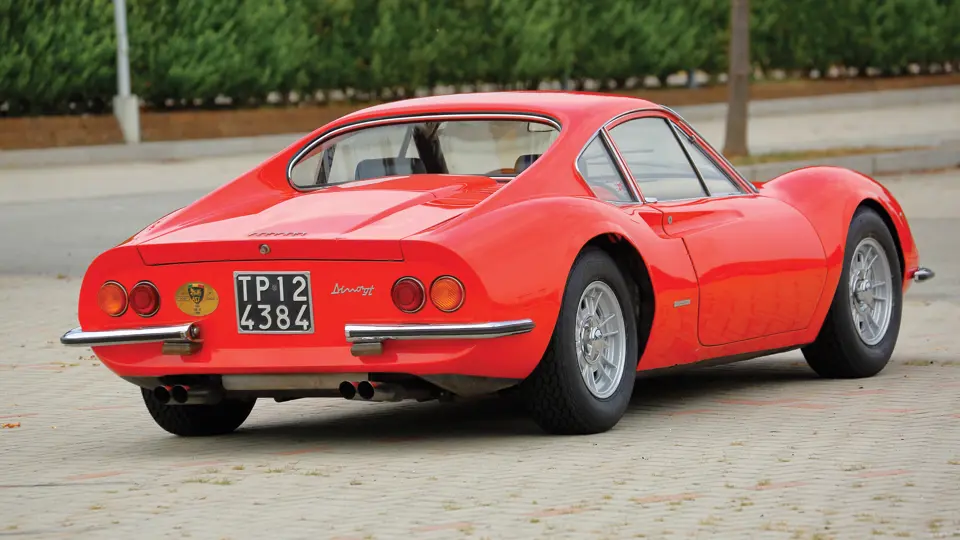
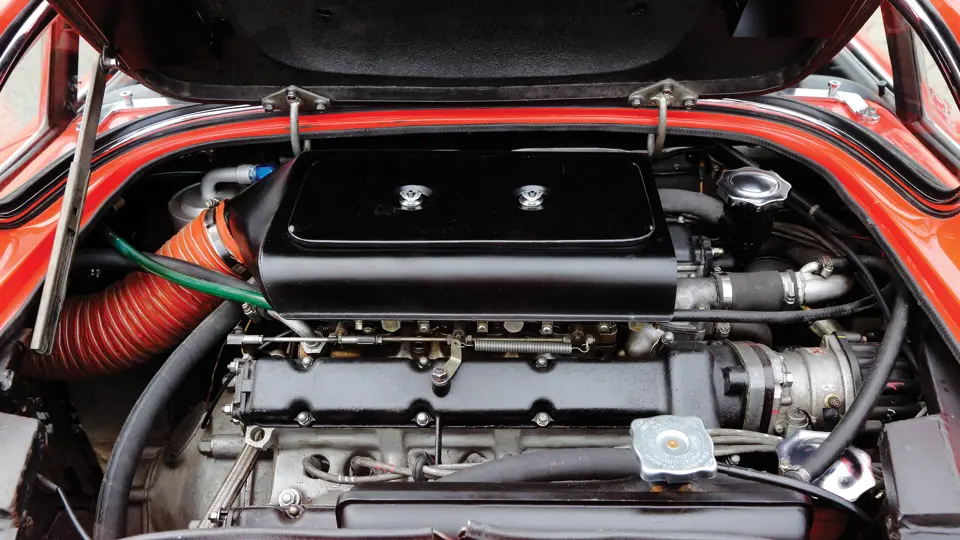
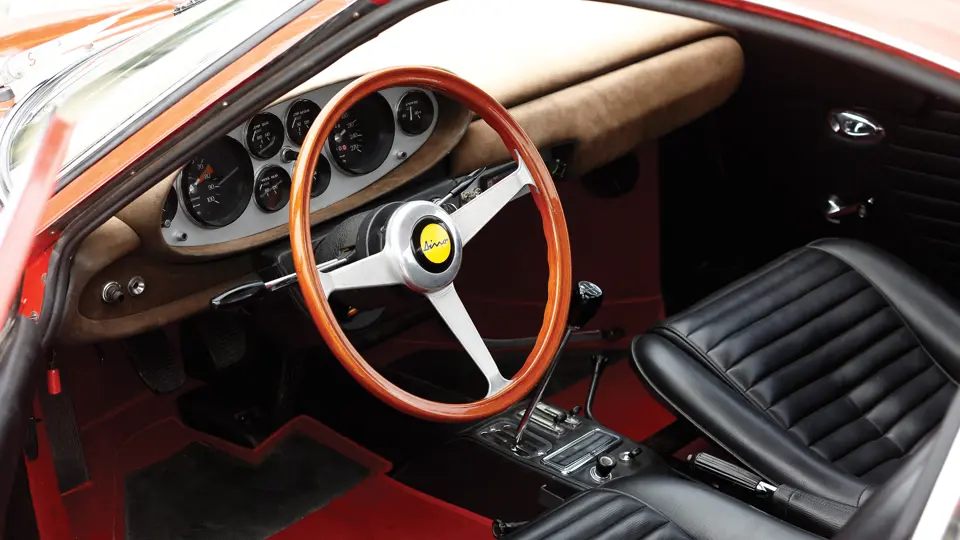


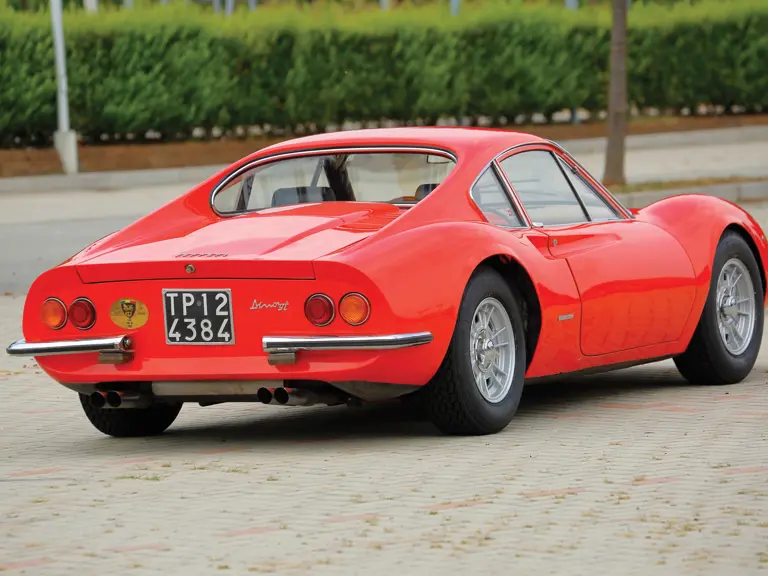



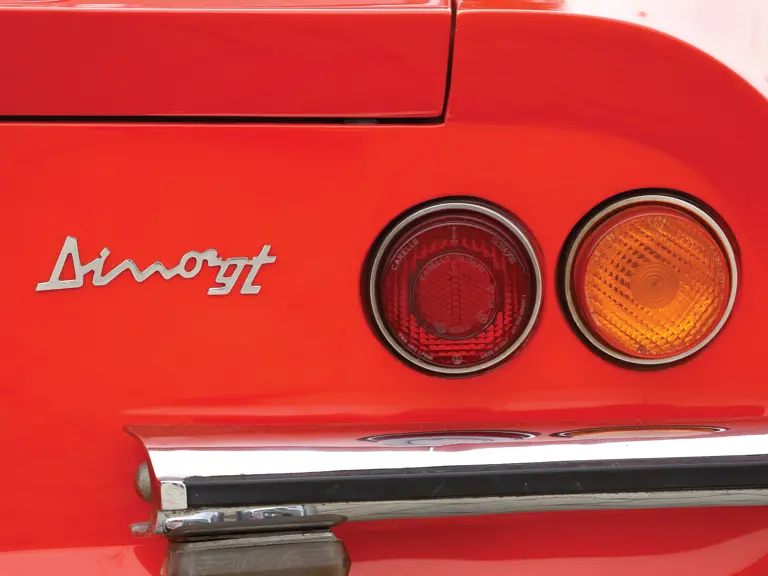
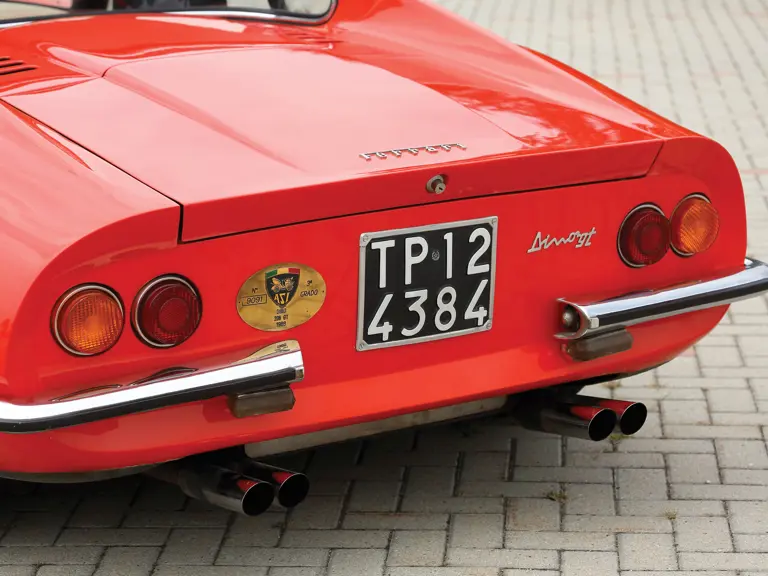
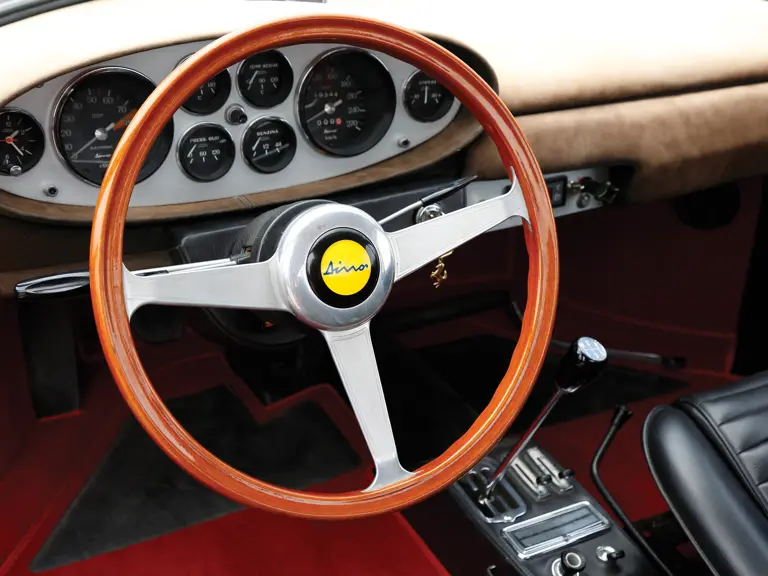
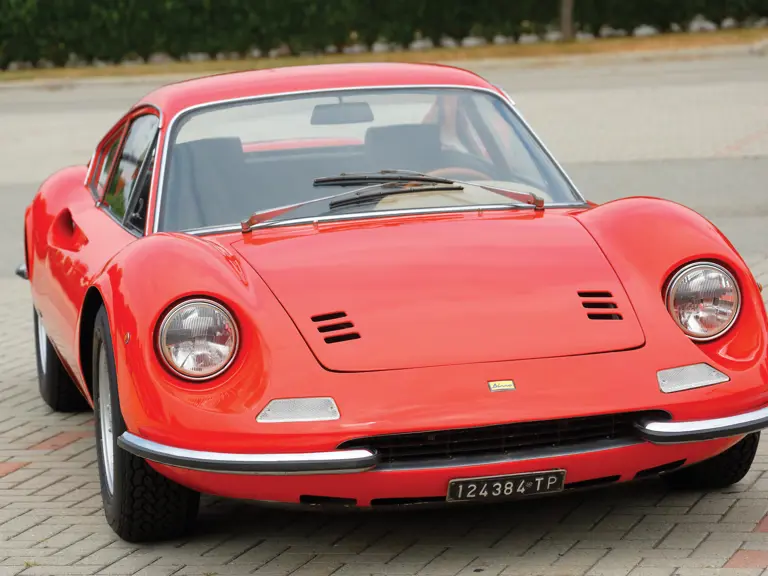
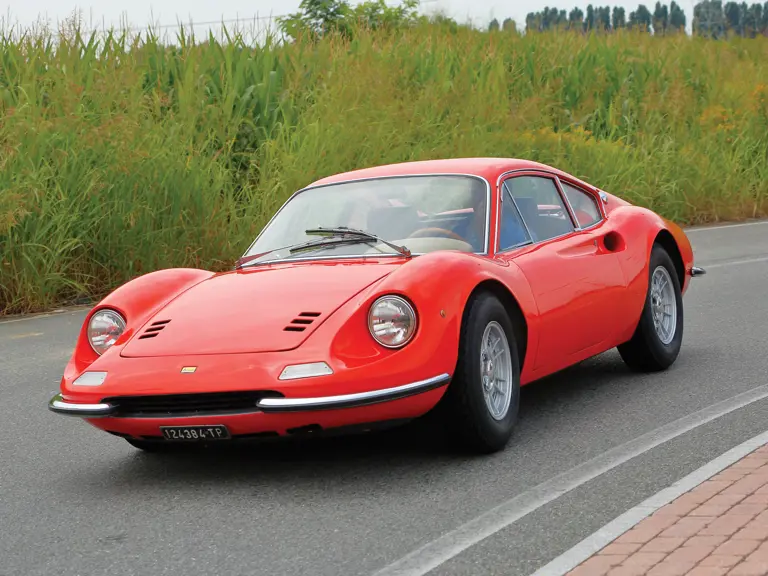


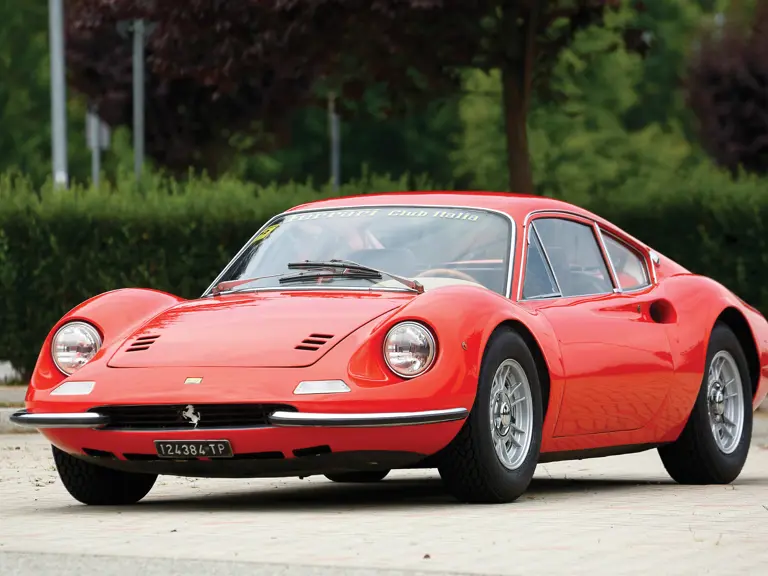
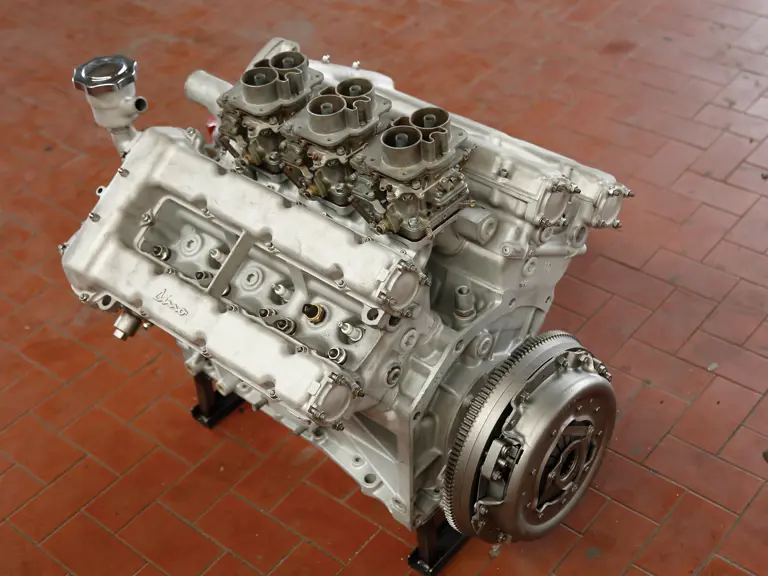
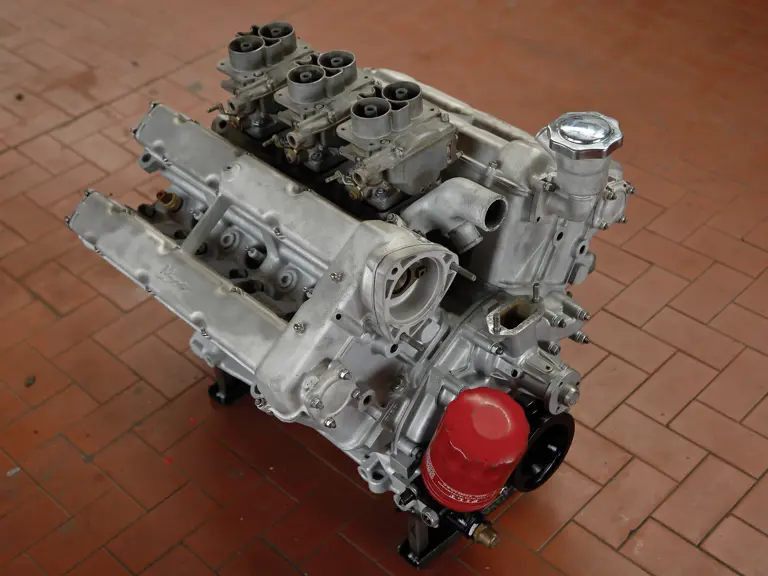
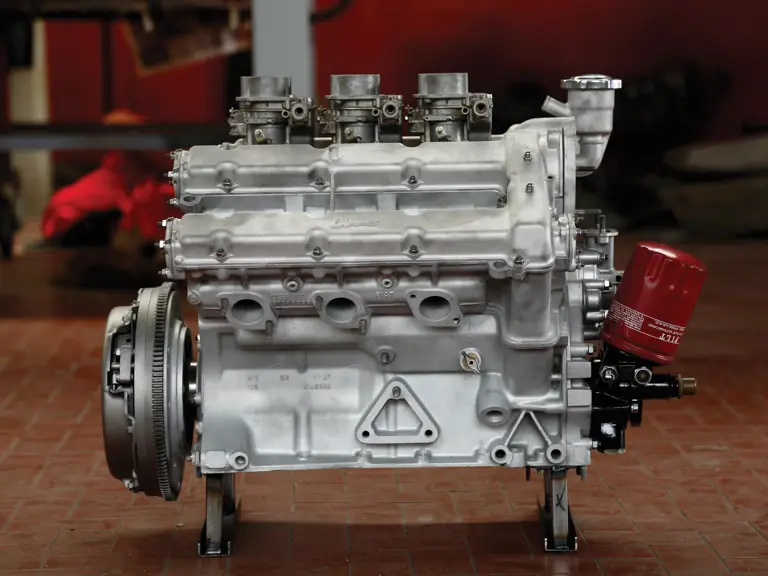
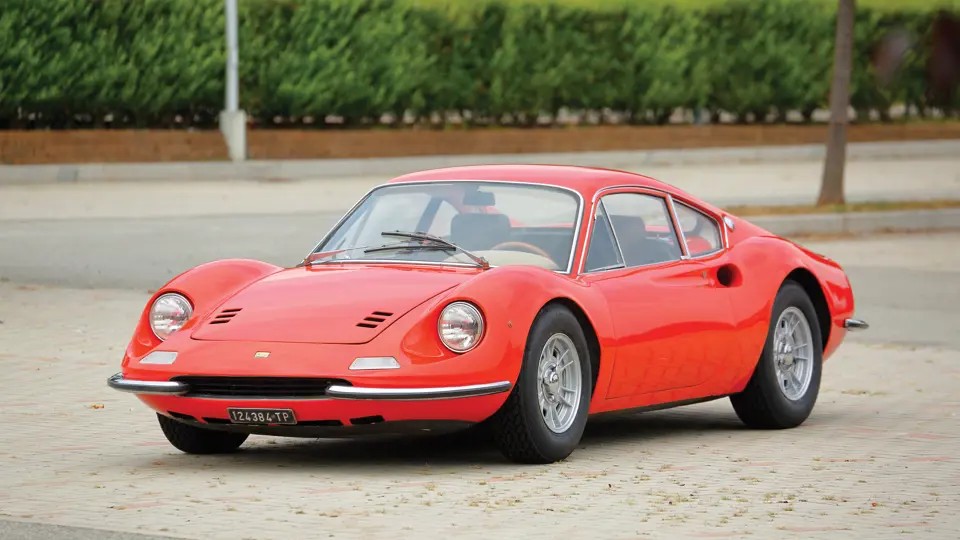
 | London, United Kingdom
| London, United Kingdom
